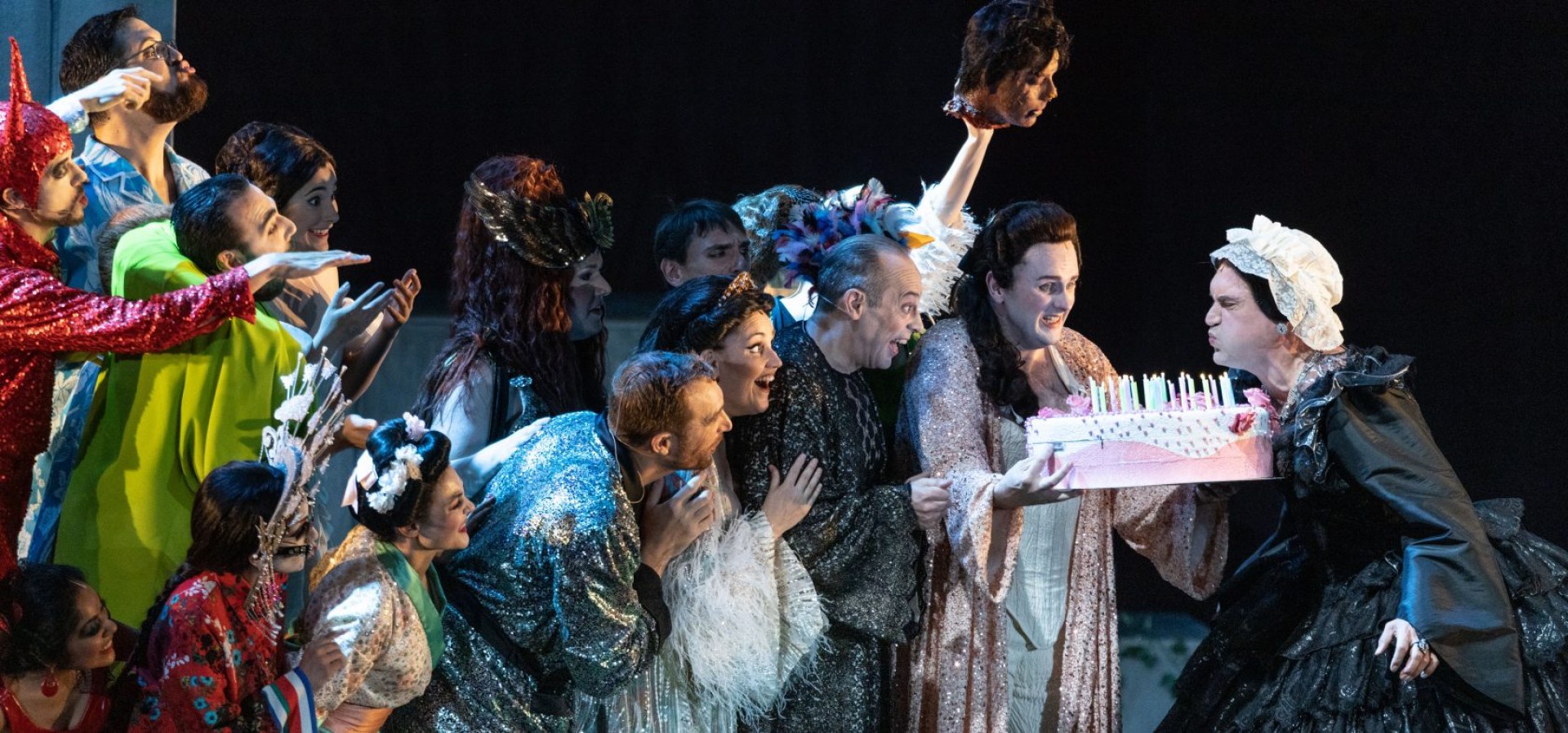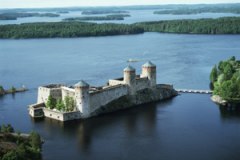The Fairy Queen
Mo | Tu | We | Th | Fr | Sa | Su |
Guest artists in summer 2025 are Festival Perelada from the Catalan countryside. Perelada is one of the most interesting cultural events in southern Europe. Concerts and opera performances take place in the medieval town’s castle, park, church and monastery.
The Fairy Queen is perfect for all summer visitors, from the opera novice to the connoisseur.
The company brings to Savonlinna the oldest music ever performed at the Opera Festival. Written in 1692 and based on Shakespeare’s A Midsummer Night’s Dream, The Fairy Queen is pure baroque, and just as rich, colourful and exuberant as you might imagine. This comedy was written during the heyday of English opera and is actually a ‘semi-opera’, a combination of opera and the aristocratic masques of the late 17th century.
The only reason it is a ‘semi-opera’ is that there are also spoken parts. As a 1692 poster says about the composer Henry Purcell: ‘Other nations use the term “opera” only for plays in which every word is sung. But experience has shown us that our English genius has no real taste for continuous singing.’
Let’s see what sort of taste this entertainment gives us! The Fairy Queen is perfect for all summer visitors, from the opera novice to the connoisseur.
Synopsis
Masque I (The Drunken Poet)
The first scene set to music occurs after Titania has left Oberon, following an argument over the ownership of a little Indian boy. Two of her fairies sing of the delights of the countryside ("Come, come, come, come, let us leave the town"). A drunken, stuttering poet enters, singing "Fill up the bowl". The stuttering has led many to believe the scene is based on the habits of Thomas d'Urfey. However, it may also be poking fun at Elkanah Settle, who stuttered as well and was long thought to be the librettist, due to an error in his 1910 biography.[6] The fairies mock the drunken poet and drive him away. With its quick repartee and its broadly "realistic" portrayal of the poor victim, the Masque of the Drunken Poet is the closest episode in Purcell's London stage works to full-fledged opera as the Italians knew it.[18]
Masque II (The Night and Sleep)
It begins after Oberon has ordered Puck to anoint the eyes of Demetrius with the love-juice. Titania and her fairies merrily revel ("Come all ye songsters of the sky"), and Night ("See, even Night"), Mystery ("Mystery's song"), Secrecy ("One charming night") and Sleep ("Hush, no more, be silent all") lull them asleep and leave them to pleasant dreams.
Masque III (Corydon and Mopsa)
Titania has fallen in love with Bottom (now equipped with his ass' head), much to Oberon's gratification. A Nymph sings of the pleasures and torments of love ("If love's a sweet passion") and after several dances, Titania and Bottom are entertained by the foolish, loving banter of two haymakers, Corydon and Mopsa.
Masque IV (Phoebus and the Four Seasons)
It begins after Titania has been freed from her enchantment, commencing with a brief divertissement to celebrate Oberon's birthday ("Now the Night", and the abovementioned "Let the fifes and the clarions"), but for the most part it is a masque of the god Phoebus ("When the cruel winter") and the Four Seasons (Spring; "Thus, the ever grateful spring", Summer; "Here's the Summer", Autumn; "See my many coloured fields", and Winter; "Now Winter comes slowly").
Masque V (The Plaint and Hymen)
After Theseus has been told of the lovers' adventures in the wood, it begins with the goddess Juno singing an epithalamium, "Thrice happy lovers", followed by a woman who sings the well-known "The Plaint" ("O let me weep"). A Chinese man and woman enter singing several songs about the joys of their world. ("Thus, the gloomy world", "Thus happy and free" and "Yes, Xansi"). Two other Chinese women summon Hymen, who sings in praise of married bliss, thus uniting the wedding theme of A Midsummer Night's Dream, with the celebration of William and Mary's anniversary.
Program and cast
Conductor: Dani Espasa
Director: Joan Anton Rechi
Set designer: Gabriel Insignares
Costume designer: Gabriela Salaberri
Lighting designer: Alberto Rodríguez
Dramaturge: Ondřej Hučín
Choreographer: Mar Gómez
O Vos Omnes Choir
Helsinki Baroque Orchestra
Language: English
Surtitles: Finnish and English
Duration: approx. 2 hrs 40 min, incl. one interval
Xavier Sabata: Countertenor
Ana Quintans: Soprano
Judit Van Wanroij: Soprano
Mark Milhofer: Tenor
Thomas Walker: Tenor
Nicolas Brooymans: Bass
VIP/ ”Aitiolippu” is an all-inclusive service that provides the following:
- A private entrance to Olavinlinna Castle
- Seats in the Box of the Opera Festival, offering a good view to the stage and quick access during intermission
- A private space for VIP/Aitiolippu guests before the performance and during intermission in the Central Hall
- Dedicated restroom facilities for Aitiolippu guests
- Savonian delicacies, also known as “sapakset” during the intermission
- Greetings from the Opera Festival management during intermission
- A welcome package including the performance program and souvenir from the Opera Festival
Olavinlinna Castle
The Savonlinna Opera Festival performances are held in two locations. Main location is Olavinlinna Castle.
Olavinlinna (Swedish: Olofsborg; literally St. Olaf's Castle) is a 15th-century three-tower castle located in Savonlinna, Finland. It is the northern most medieval stone fortress still standing.
The castle is built on an island in the Kyrönsalmi strait that connects the lakes Haukivesi and Pihlajavesi.
Transport to Olavinlinna
Transport to the opera performances and concerts is provided (for a charge) from the main Savonlinna hotels to the Castle and back.
Route/timetable
18.00 Malakias Summer Hotel (Hernemäki)
18.10 Tott Hotel
18.15 Seurahuone Hotel
18.20 Spa Hotel Casino and Vuorilinna
18.25 Pietari Kylliäinen Hotel
18.30 Olavinlinna Castle, Linnankatu stop.
The return journey leaves the stop on Linnankatu for charter buses near the Castle 15 minutes after the end of the performance.

 EN
EN DE
DE IT
IT FR
FR ES
ES RU
RU JP
JP RO
RO
 Seating plan
Seating plan 


